Fred David led the design of the CA-12 Boomerang, the only operational fighter aircraft designed and built in Australia.
Conceived by him in the days immediately following the Japanese raid on Pearl Harbour, the first Boomerang flew less than six months later.
The irony is that the aeronautical knowledge Fred David drew on to design this fighter was acquired in the German aircraft industry from the mid-1920s to the mid-1930s – plus two years in Japan working on the design of a dive bomber used at Pearl Harbour.
Stateless, he came to Australia in 1939 recruited by the Commonwealth Aircraft Corporation in Fishermans Bend. His fascinating career across four continents spanned aeronautically designed biplanes to guided missiles.
Old Vienna
Born Friedrich Wilhelm Dawid on January 17, 1900, in Vienna, his father was a merchant. Originally from Bzenec, Moravia (now part of the Czech Republic), his was one of the many Jewish families that had moved to Vienna, as part of a massive migration to the capital from all parts of the Hapsburg Empire in the latter decades of the late 19th century.
It was a period of major social change and economic development with middle class residential apartments transforming the artisanal character of the inner-city districts of Vienna.
As he entered his teens, Friedrich was not to know that many of the key players who would shape the geopolitical world for the next 50 years, and with it, Friedrich’s life and career, resided in Vienna.
At different times, these included Leon Trotsky, Adolf Hitler, Joseph Tito, and Joseph Stalin. Not far from where the Dawid family lived, Trotsky, Hitler and Stalin would have taken coffee, read newspapers, and above all discussed politics with their friends, in that most Viennese of institutions, the café. Not far away, the heir presumptive to the Austrian Empre, Archduke Franz Ferdinand, whose assassination would trigger the Great War, resided at the Hapsburg Palace.
Then a month after his 14th birthday, Friedrich’s immediate world changed when his father passed away leaving the family – not destitute – but much less comfortably off.
However, Friedrich was able to complete his secondary school studies, and passed the university entrance examination in July 1918. He enrolled in what is today the Technical University of Wien where he studied Mechanical Engineering.
From the second year of his studies onwards, he was completely exempted from tuition fees, indicating the family was not well-off.
His time at Technical University Wien coincided with the collapse of the Hapsburg Monarchy and a turbulent period leading to the formation of the First Austrian Republic in 1919.
The immediate post-war period saw unrest in the streets, spiralling inflation, and the precipitous decline in the value of the Austrian currency. The old certainties of empire were swept away as Austria-Hungary fragmented into its component parts.
In the summer of 1922, as Friedrich graduated, the future of Austria as a viable country and a modern industrial economy remained problematic.
Mathematical Abilities
Friedrich’s first engineering job was with F. Piechatzek of Berlin, a manufacturer of hoisting equipment, where he was employed as a design engineer for ten months from September 1922.
He then joined the heavy electrical engineering manufacturer ASEA in Västerås, Sweden where again he worked on the design of lifting machinery.
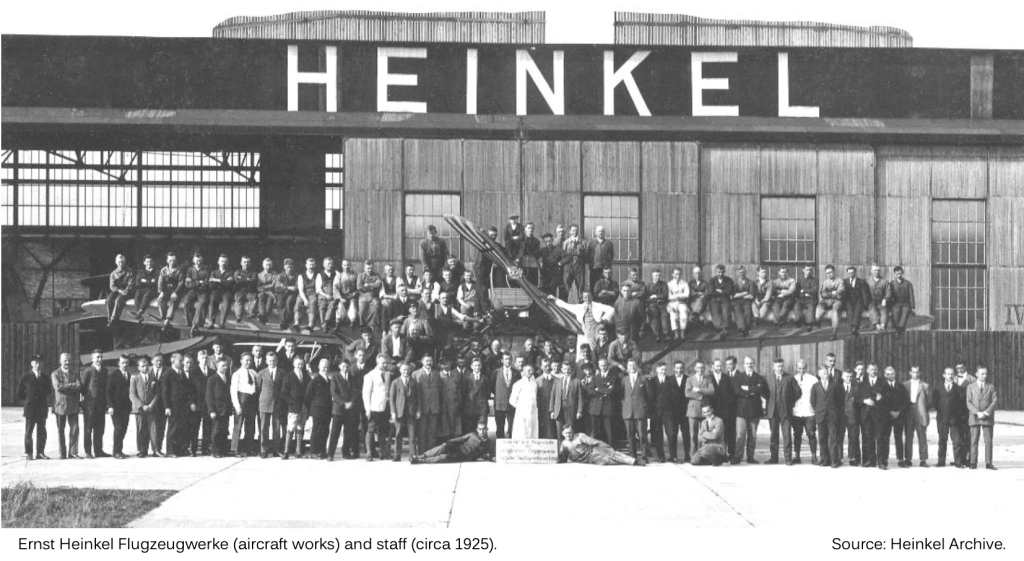
However, the trajectory of his career changed in January 1925 when he accepted a position back in Germany at the Ernst Heinkel Flugzeugwerke (aircraft works) in Warnemünde on the Baltic Coast.
Friedrich’s first task at Heinkel was to do the calculations for the design of a set of rails to launch floatplanes from ships. The launch system relied upon the power of the aircraft to reach take-off speed by the time it reached the end of the rails – there was no catapult.
The system was tested on the Japanese battleship Nagato off Yokosuka in August 1925. Subsequently sixteen Heinkel designed floatplanes were made in Japan by the Aichi Aircraft Company for the Imperial Japanese Navy.
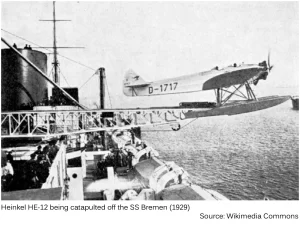 By then, Friedrich had moved to the statics department at Heinkel where he learned the art of static and aerodynamic calculations associated with aircraft design. Recognized for his excellent mathematical abilities, in November 1926 he was appointed the manager of this office, supervising 22 staff.
By then, Friedrich had moved to the statics department at Heinkel where he learned the art of static and aerodynamic calculations associated with aircraft design. Recognized for his excellent mathematical abilities, in November 1926 he was appointed the manager of this office, supervising 22 staff.
During his time there, Friedrich was responsible for the oversight of all calculations associated with ten different aircraft types. By 1927, Friedrich was once again involved in the design of systems to launch aircraft from ships, this time using air-powered catapults.
The idea was that a plane could be launched at sea from a ship up to 1000 km from shore, and thus get mail carried by the ship to its destination one to two days earlier than if it completed the journey on the ship.
In the winter of 1927/28, Friedrich shared his knowledge of aerodynamics by giving a course at the German Aviation School in Warnemünde for seaplane pilots undergoing the training to obtain a license to fly airplanes of any size.
Then in January 1929, Friedrich sailed to America to take up the position of assistant chief engineer at the Knoll Aircraft Corporation, a start-up in Wichita, Kansas. Knoll, a German aircraft designer who had been the chief engineer with Heinkel in Warnemünde, quickly assembled a team of fellow German aircraft engineers, including Friedrich.
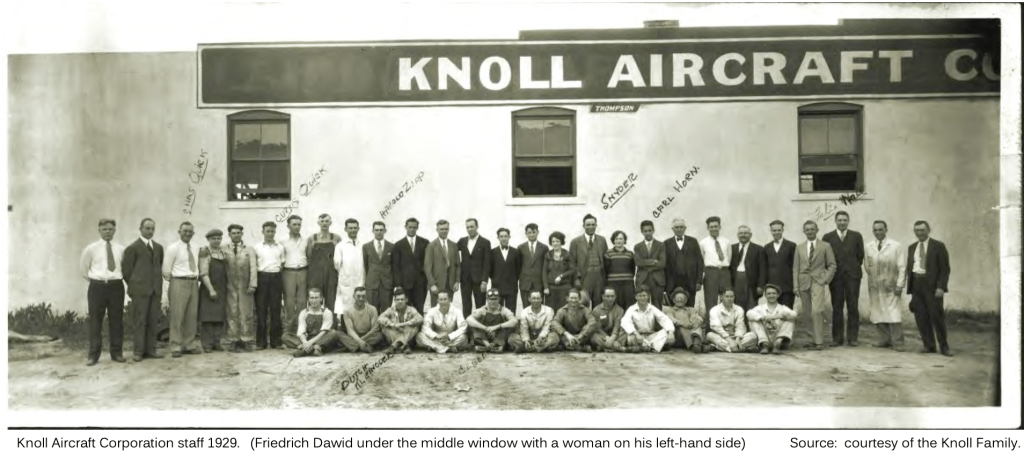
In August 1929, it was announced that Friedrich was to deliver a course on aerodynamics at Friends University, a local Quaker institution.
Unfortunately, the course never took place as the Knoll Aircraft Corporation folded in October 1929, a year after it was founded, and Friedrich was out of a job. He sailed from Montreal to London in October 1930, en route to Germany and a position as design engineer back at Heinkel.
High-performance aircraft
Aircraft design underwent a transformation at Heinkel with the arrival in 1931 of the gifted Günter brothers, Siegfried and Walter. They led the design of the HE-70, a game-changing, fast mail plane with a monocoque fuselage and elliptical wings and retractable landing gear. Friedrich was a member of the design team that worked on this aircraft. It achieved several speed records and Lufthansa referred to it as the “Heinkel-Blitz”.
The HE-70 influenced the design of aircraft by other manufacturers and was the antecedent of the HE-111, a medium bomber that played a major role in the bombing blitz on Britain in 1940.
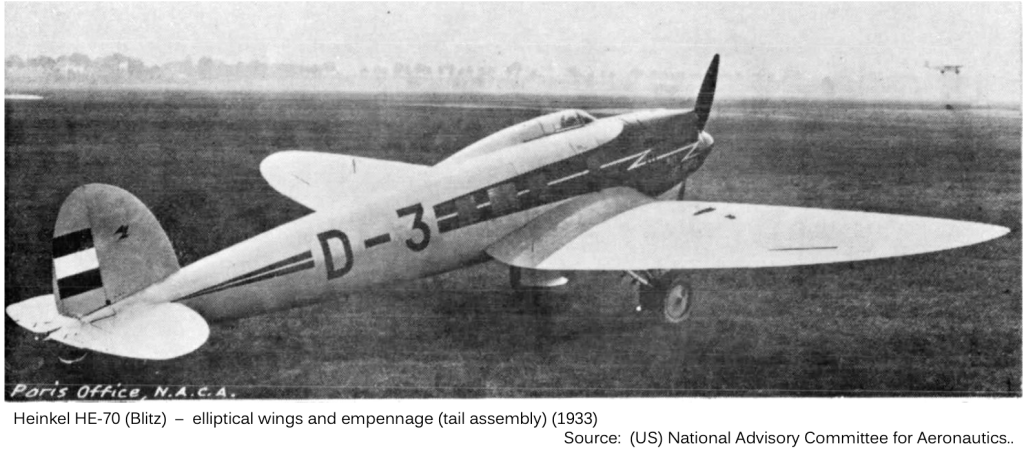
After Hitler became German Chancellor in January 1933, sanctions against Jews meant that in April Friedrich had to leave the Heinkel works. However, Ernst Heinkel had a deep respect for Friedrich’s abilities, and he wrote a personal reference and assisted him to obtain employment during the remainder of the decade. Friedrich moved to Berlin, where he married Else Frankenberg at a registry office on May 10, 1933. He was 33 and she was 36.
In May 1934, Friedrich was hired by Fieseler-Flugzeugbau in Kassel, central Germany, as a design engineer. Gerhard Fieseler was a German flying ace from World War 1 and a champion aerobatics pilot.
The new company quickly developed a reputation for its high-performance aerobatic and sports aircraft.
Friedrich undertook the load analysis and structural design of high-performance aircraft at Fieseler, gaining a reputation for his ability to transfer theoretical investigations into practice in a simple form.
Then in November 1935, Else and Friedrich moved back to the Berlin area where he joined Bücker-Flugzeugbau as head of the project department, overseeing all aerodynamic and static calculations for new aircraft.
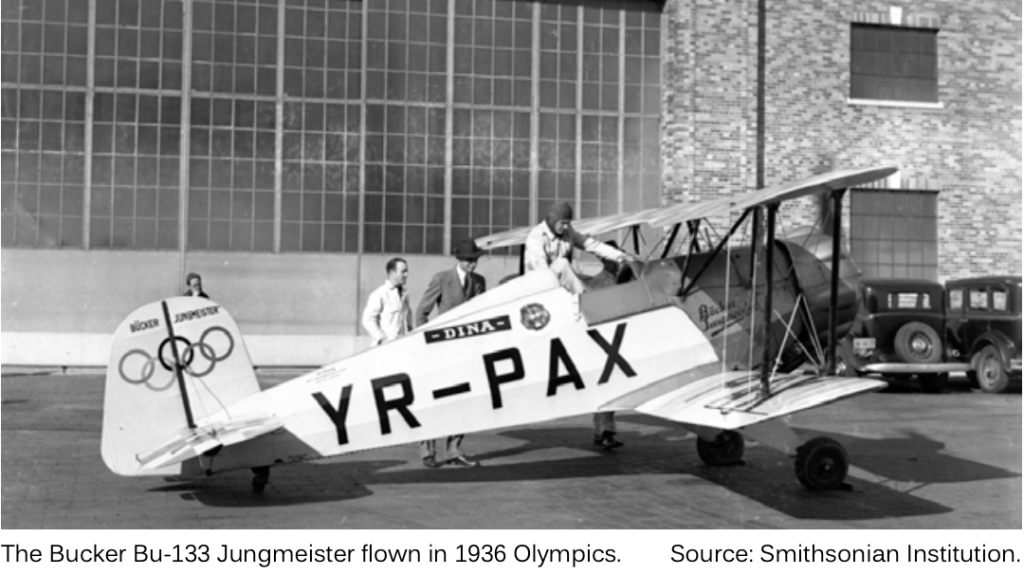 During this time, Bücker produced their best-known aircraft, the single seat BÜ-133 Jungmeister, which featured in the 1936 Berlin Olympics, where aerobatics was a demonstration sport. It went on to become the primary advanced trainer for the Luftwaffe leading up to and during the Second World War.
During this time, Bücker produced their best-known aircraft, the single seat BÜ-133 Jungmeister, which featured in the 1936 Berlin Olympics, where aerobatics was a demonstration sport. It went on to become the primary advanced trainer for the Luftwaffe leading up to and during the Second World War.
Life for Jews in Germany was becoming increasingly precarious so, in March 1937, Friedrich and Else sailed for Japan where he worked as an aerodynamics consultant at Aichi in Nagoya. He worked on the design of the elliptical wings and other aspects of a new dive bomber for the Imperial Japanese Navy, the Aichi D3A, with the Allied code name ‘Val’. The chief designer, Tokuichiro Gomei, had spent time at the Heinkel works in the early 1930s learning about all-metal construction techniques, centred on the HE-70 Blitz.
However, strict security meant that Friedrich was isolated from the design and prototyping team and worked from an office away from the main factory with Japanese assistants who spoke German and English.
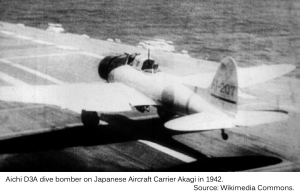 He was only allowed to visit the factory if he was inspecting a component or assembly with which he was directly involved, and even then, he had to be accompanied by a security guard. He felt like a complete outcast.
He was only allowed to visit the factory if he was inspecting a component or assembly with which he was directly involved, and even then, he had to be accompanied by a security guard. He felt like a complete outcast.
With Japan and Germany drawing closer together politically, Friedrich began to look for a more secure future. With encouragement from the Australian trade representative in Japan, he took a position at the recently formed and rapidly growing Commonwealth Aircraft Corporation Pty Ltd. in Fishermans Bend, a then mainly industrial inner suburb of Melbourne, south-west of the CBD.
Friedrich and Else arrived in Melbourne on March 20, 1939. He changed his name by deed poll to Frederick William David, but he was better known as Fred David. The other members of his immediate family also came to Melbourne to escape from Europe. His older brother Alexander had arrived in September 1938, while his seventy-year-old mother, Hermine, accompanied by his younger brother Arthur and Arthur’s wife Elisabeth, arrived in May 1939. The whole family was now effectively stateless.
Enemy aliens
Fred David commenced work at the Commonwealth Aircraft Corporation (CAC) at Fishermans Bend on April 17, 1939, as a stress engineer. At that time the principal design and development projects underway were the CA-1 Wirraway and the CA-2 Wackett Trainer.
The first flight of a Wirraway took place a few weeks earlier on 27 March and its flight trials and evaluation proceeded until July when the first deliveries were made to the RAAF. The Wirraway, a North American NA-33 modified for local conditions, was the first aircraft type manufactured by the CAC and the Wackett Trainer was the first aircraft to be fully designed and built by the CAC.
The declaration of war on September 3, 1939, meant that Fred (and all his family) found themselves classified as ‘enemy aliens’. He had to report regularly to the local police and daily to the security personnel at the CAC.
 Fred was very open with colleagues about his history designing aircraft in Germany. They never doubted his loyalty, so reporting to security each day before he went about contributing directly to Australia’s war effort must have seemed strange.
Fred was very open with colleagues about his history designing aircraft in Germany. They never doubted his loyalty, so reporting to security each day before he went about contributing directly to Australia’s war effort must have seemed strange.
Six months after starting at the CAC, ‘enemy alien’ Fred David was promoted to the position of Design Engineer. He then became the chief engineer on the CA-4 Woomera project, a medium bomber conceived by the General Manager of the CAC, Lawrence Wackett. There were around 60 people engaged on the project, half in the design and drawing offices and half on the factory floor.
Work continued through 1940 and the prototype CA-4 took to the air in September1941. Over the next few months, the war came close to home for Australians. After the Japanese attack on Pearl Harbour on December 7 the bad news kept coming and the direct threat to Australia was palpable as preparations accelerated against possible attacks or invasion.
Urgent fighter aircraft
In the days immediately after the Pearl Harbour attack, Fred David sketched ideas for a fighter that could be quickly developed and produced. Acutely aware of the lack of fighter aircraft available to defend Australia, we needed a stop gap until a frontline fighter could be sourced from the US. Fred discussed his ideas with colleagues and brought it to the attention of senior management, and a proposal to build a fighter-interceptor was put to government at the end of December. Design and development work of what became the Boomerang moved ahead at the CAC with Fred David as that project’s chief design engineer. On 2 February 1942, the War Cabinet approved one prototype to be made, followed by an order for 105 aircraft on February 18.
The first CA-12 Boomerang flew on 26th May 1942.
[embedyt] https://www.youtube.com/watch?v=vfrlJilXVtM[/embedyt]
By world standards this was an incredibly short time span to create a new fighter aircraft. The achievement was even more remarkable given the embryonic state of our aircraft industry. This was Fred David’s hour, the culmination of his long ‘apprenticeship’ learning from leading aircraft designers.
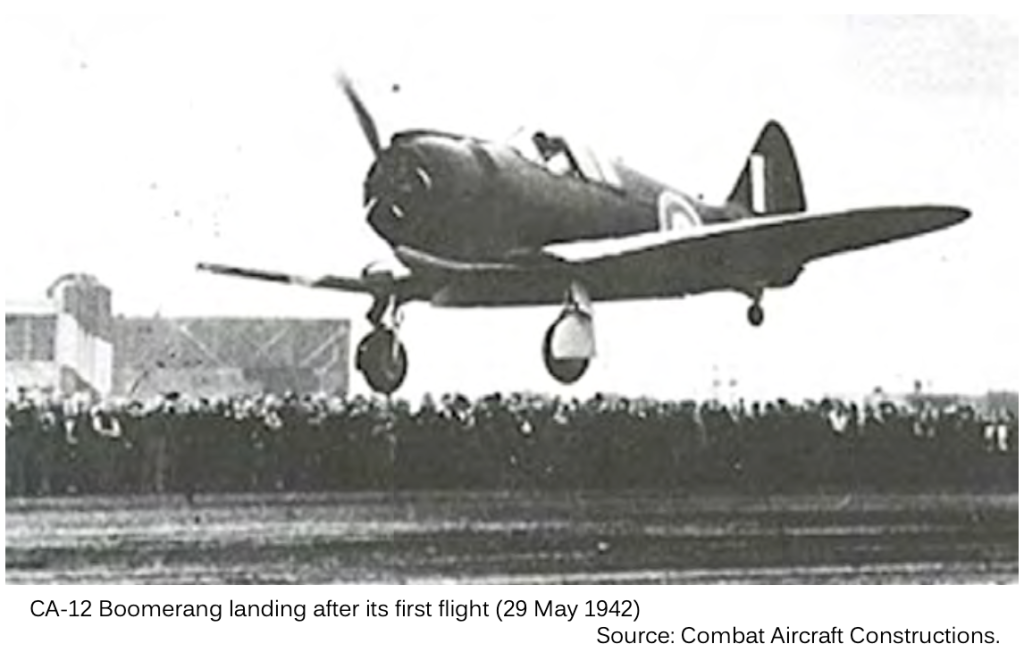
Given the compressed time frame and material constraints of its development, Fred David freely acknowledged that the Boomerang was never going to be a cutting-edge fighter aircraft, lacking speed and rate of climb at altitude.
However, its superb manoeuvrability at low altitude, combined with its fire power, enabled the Boomerang to fill a critical niche in our defences as an Army cooperation fighter, undertaking tactical reconnaissance, strafing and target marking. RAAF Boomerang squadrons served in forward operations from northern Australia, New Guinea, Bougainville, and Borneo as well as in home defence.
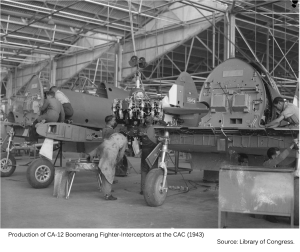 The CAC built a total of 250 Boomerangs, across three variants, with the last one being delivered in February 1945.
The CAC built a total of 250 Boomerangs, across three variants, with the last one being delivered in February 1945.
As the Boomerang was going into production, Fred David began to explore the design of a new fighter model, the CA-15, a successor to the CA-12 Boomerang.
The CA-15 would embody the latest in airframe design and manufacturing techniques, the first CAC designed aircraft to have a semi-monocoque rather than a tubular framed fuselage. A proposal went to the Department of Aircraft Production in November 1942 and in January 1943 the War Cabinet approved funds for a prototype to be built. In February 1943, Fred David was appointed Chief Design Engineer for all of the CAC.
However, priorities changed dramatically in July that year after a mission led by the Secretary of the Department of Aircraft Production returned from a trip the US and the UK with recommendations for the ‘best of type’ bomber and fighter to meet RAAF needs after 1944. They selected the American P-51 Mustang over the British Spitfire as the next fighter to be made in Australia by the CAC.12 As a consequence, the CA-15 project was given a low priority, kept alive only to enable promising young design engineers to be stimulated and to gain experience.
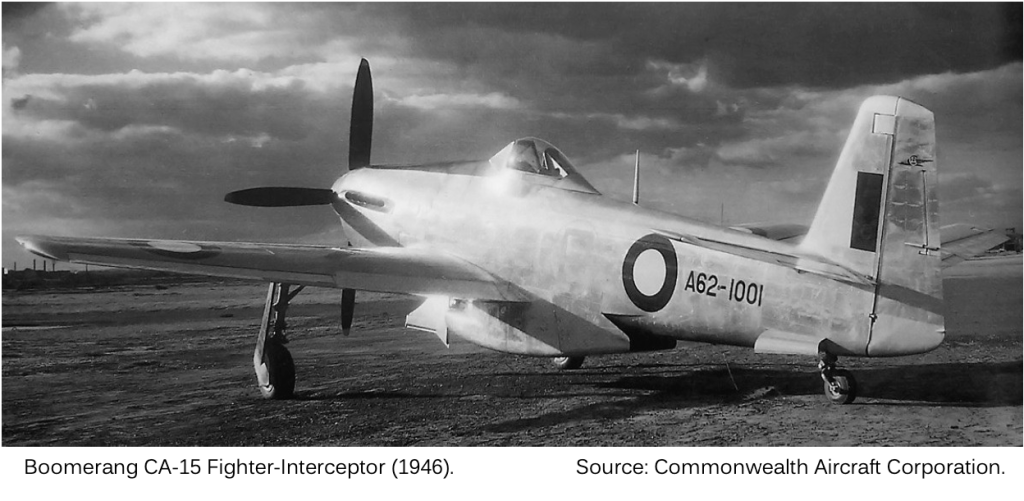 While only one CA-15 was completed, this aircraft is arguably the most advanced propeller driven fighter ever built. However, the arrival of jet propulsion had rendered it obsolete. By 1946, the jet-powered Gloster Meteor (UK) and P-80 (US) fighters were operational, and all future fighters would be jet powered.
While only one CA-15 was completed, this aircraft is arguably the most advanced propeller driven fighter ever built. However, the arrival of jet propulsion had rendered it obsolete. By 1946, the jet-powered Gloster Meteor (UK) and P-80 (US) fighters were operational, and all future fighters would be jet powered.
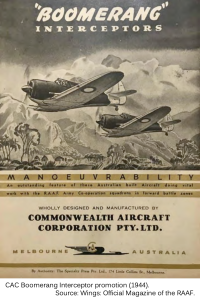 With the end of hostilities in 1945, production priorities at the CAC changed dramatically. They diversified into making an eclectic range of products to meet the needs of post-war Australia including prefabricated houses, buses, and household appliances. Fred David was one of a group of CAC staff who visited the UK to undertake a course on jet engines in 1946, staying on in the UK for nearly a year at the Supersonic Department of the Royal Aircraft Establishment at Farnborough where he studied developments in rockets. With the prospect of designing high performance aircraft in Australia looking bleak, Fred David left the Commonwealth Aircraft Corporation in September 1947.
With the end of hostilities in 1945, production priorities at the CAC changed dramatically. They diversified into making an eclectic range of products to meet the needs of post-war Australia including prefabricated houses, buses, and household appliances. Fred David was one of a group of CAC staff who visited the UK to undertake a course on jet engines in 1946, staying on in the UK for nearly a year at the Supersonic Department of the Royal Aircraft Establishment at Farnborough where he studied developments in rockets. With the prospect of designing high performance aircraft in Australia looking bleak, Fred David left the Commonwealth Aircraft Corporation in September 1947.
Aeronautical research
After leaving the CAC, Fred David took up a position as a Senior Scientific Officer at the Division of Aeronautics of the Council for Scientific and Industrial Research (CSIR), which was located next door to CAC. Over the years he had interacted frequently with the staff at the Division when they conducted wind tunnel tests and analysed the performance of various aircraft he was designing and developing at the CAC. This shift in career direction from aircraft design to research and development was encouraged by the Director of the Division of Aeronautics, Lawrence Coombes, who had visited Fred David when he was based at Farnborough in 1947.
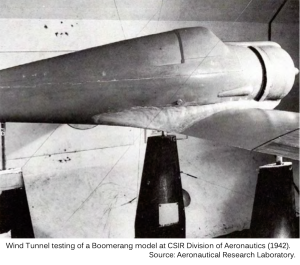 Construction of CSIR laboratory facilities at Fishermans Bend had commenced in August 1939, and while work continued until the end of 1941, the main building was already occupied in May 1940.
Construction of CSIR laboratory facilities at Fishermans Bend had commenced in August 1939, and while work continued until the end of 1941, the main building was already occupied in May 1940.
A centrepiece of the laboratory was the enormous low-speed wind tunnel completed in 1941, the first in Australia.
In 1949, the Division of Aeronautics was transferred from the CSIR to the Department of Supply and renamed the Aeronautical Research Laboratories (ARL).
Fred David was promoted to Principal Research Scientist in charge of the Applied Aerodynamics Section in March 1950 and a year later he was appointed as the Superintendent of Aerodynamics.
When Lawrence Coombes retired in 1964, he saw fit to record his appreciation for the many contributions Fred David made at the ARL. These included reconstruction of the 9ft x 7ft low speed wind tunnel for duplex working, developing the variable pressure tunnel into a modern transonic tunnel, fostering the Mathematical Assessment Group into a powerful unit, and initiating Human Engineering at ARL.
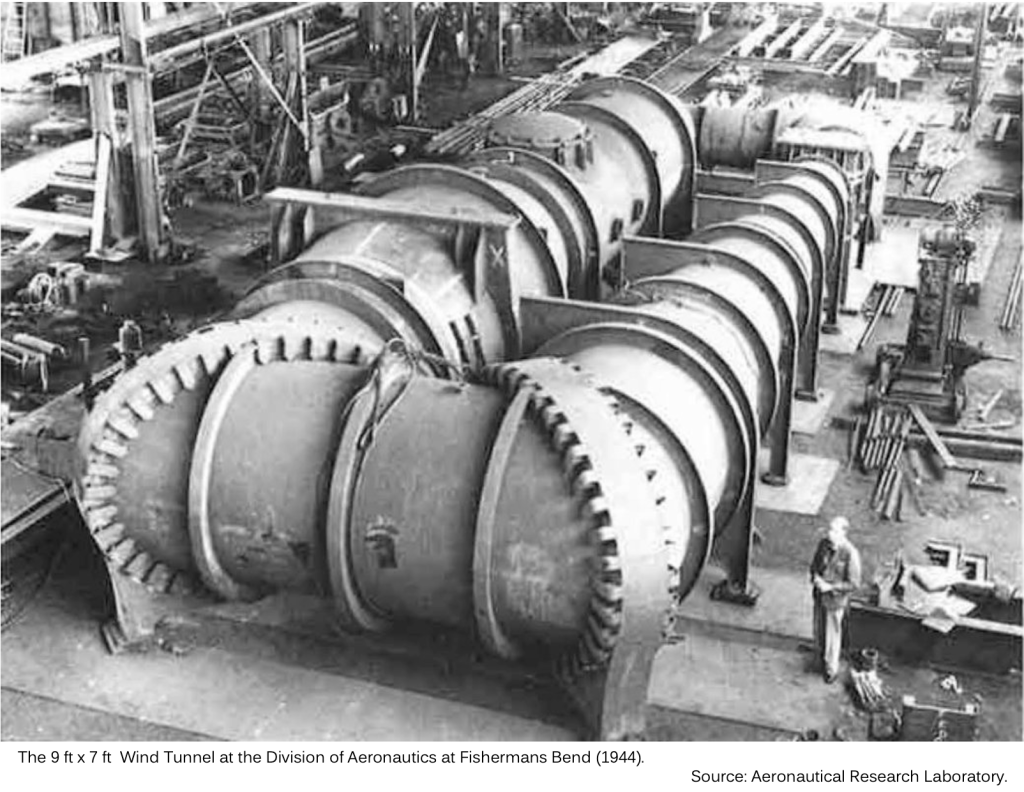
Coombes singled out the transonic tunnel as an example of Fred’s tenacity of purpose. After encouraging Fred David to visit the US, the Americans withheld the vital design information so that he and his staff were compelled to work out the whole problem again. With meagre funds at his disposal, they made skilful use of discarded equipment, and the ARL workshops, to create a first-class piece of apparatus.
In 1959, Fred moved to the Department of Supply headquarters in the city as Assistant Controller (Guided Weapons) where he had oversight of the Ikara project, an Australian designed long-range, anti-submarine guided weapon conceived at the ARL. As the project got underway, he spent two weeks in the UK and four weeks in the US exchanging information with our allies. The Ikara system entered service in the Royal Australian Navy in 1966 and was later adopted by the Royal Navy as well as the navies of New Zealand and Brazil.
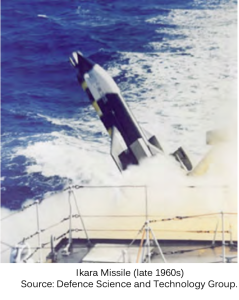 Fred David retired from the Department of Supply on February 16, 1967, his 67th birthday. His plans for retirement included studying wave motion, and lecturing at what is now RMIT University. He ended up collaborating with a former colleague from the CAC, Lionel Stern, to work on the development and promotion of medical equipment from Germany. Stern had had a very successful career post-war as a designer, transforming Repco Research into a powerful R&D organisation in the automotive industry.
Fred David retired from the Department of Supply on February 16, 1967, his 67th birthday. His plans for retirement included studying wave motion, and lecturing at what is now RMIT University. He ended up collaborating with a former colleague from the CAC, Lionel Stern, to work on the development and promotion of medical equipment from Germany. Stern had had a very successful career post-war as a designer, transforming Repco Research into a powerful R&D organisation in the automotive industry.
Quiet achiever
Fred David did not blow his own trumpet nor seek publicity. He was always modest about his contributions to projects, and quick to attribute successes to the team. With his obvious intellect, he could have easily been overbearing but he wasn’t. Those who worked with him were impressed with his pleasant and gentle manner.
He was so well-liked and respected at the ARL that there was no opposition to his acting as deputy to Coombes over a period of years even though he was not the most senior person who could have assumed this role.
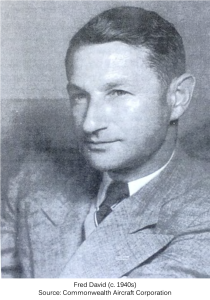 Outside of engineering, Fred David’s passion was chamber music, part of his Viennese heritage. He played the cello in a quartet and sang in a choir. A very private man, Fred David kept his thoughts to himself, revealing relatively few insights beyond the essential parts of his story. During the hectic schedule to deliver the Boomerang fighter in early 1942, what did he feel when he heard the news that Aichi D3A ‘Val’ bombers, which he had helped design, took part in the first air raid on Darwin? How did the soul of the musician sit with the exacting precision of the design engineer?
Outside of engineering, Fred David’s passion was chamber music, part of his Viennese heritage. He played the cello in a quartet and sang in a choir. A very private man, Fred David kept his thoughts to himself, revealing relatively few insights beyond the essential parts of his story. During the hectic schedule to deliver the Boomerang fighter in early 1942, what did he feel when he heard the news that Aichi D3A ‘Val’ bombers, which he had helped design, took part in the first air raid on Darwin? How did the soul of the musician sit with the exacting precision of the design engineer?
Fred David passed away in June 1992, aged 92. He and Else did not have any children.
The author wishes to thank the following people for their assistance in helping to gather information about Fred David and his family; Matt Denning, Greg Batts, Derek Buckmaster, Paulus Ebner (TU Wien), Heather Powell (Friends University), Rodney Eisfelder, Judith Levron, and Karen Rogers (Monash University).


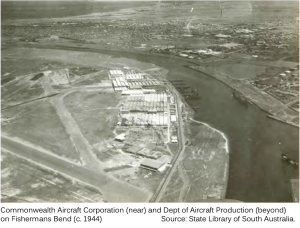


The CAC 15 was was superior to the Mustang in every way. Shame our politicians lacked the will to support Fred’s vision and our local industry.